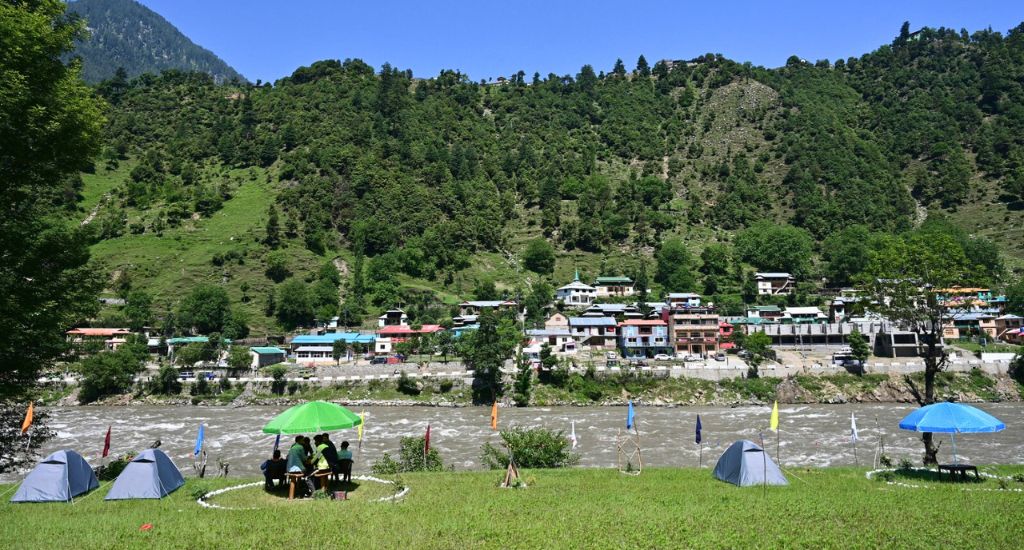
Border tourism boosts Keran village
Standing on the banks of the roaring Kishanganga river, Keran has become a new tourism sensation in J&K bringing both hope and fortune to the villagers.

Standing on the banks of the roaring Kishanganga river, Keran has become a new tourism sensation in J&K bringing both hope and fortune to the villagers.
As the sun’s rays gently caress the surreal slopes of the nearby woods in the early morning light, a young shopkeeper meticulously arranges an array of snacks, chocolates, and toffees on his shop’s display with boost in border tourism.
This sight of processed snacks hanging from a small rope in front of the old wooden shops is a relatively new phenomenon for the local population in Keran, a picturesque frontier village nestled along the Line of Control in Kupwara district of north Kashmir.

The village shops primarily offered essential commodities. However, as thousands of visitors flock to this remote village, the local population is reaping the benefits of visible economic activity in the area.
“Earlier, I used to sell only a small quantity of cold drinks and snacks to locals. But over the past few months, the demand for eatables, soft drinks, and chocolates have increased because of tourists visiting the village,” Mohammad Ismail Khan, a grocer in the village, reflected on the transformation.
Also Read: Trekking through Kashmir’s great lakes
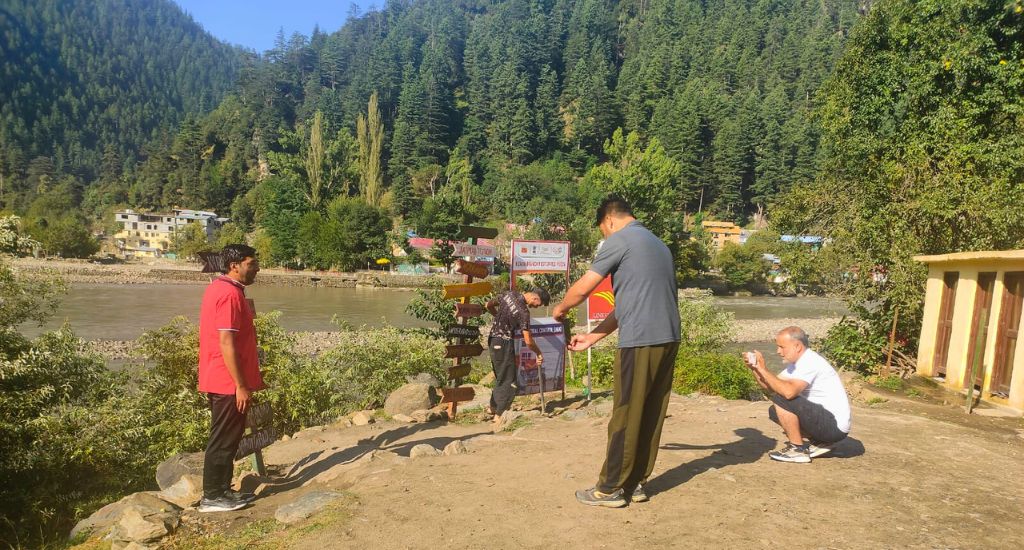
Situated amidst the mountains, approximately 140km from Srinagar, Keran is perched on the banks of the Kishanganga, a river also known as Neelum, which acts as a physical divide between the two Kashmirs in India and Pakistan.
Known for its pristine natural beauty, the village was once strictly inaccessible to the rest of the country due to military confrontations and border skirmishes between the two neighbouring nations. However, with the prevailing peace and tranquillity in the region over the past few years, the government has opened up this serene location to the general public.
Sarpanch Anisa Bhat highlighted the role of the Indian Army and local administration in promoting Keran as a border tourism destination.
“They have been instrumental in fostering peace and development in the area,” she said.
Also Read: Mandala art and Kashmir’s shikara sorceress
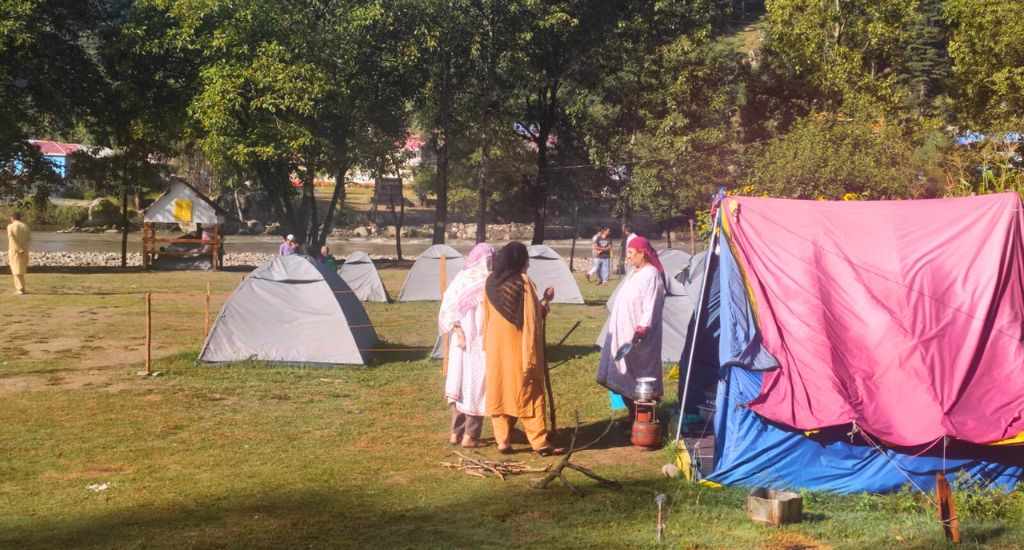
Since the past year, thousands of tourists, both local and foreign, have started pouring into this remote village. Weekends witness a significant increase in visitor footfall.
Director of tourism Raja Yaqoob Farooq pointed out that tourists from across India, not just from Kashmir, are now exploring these areas.
Given Keran’s considerable distance from Srinagar, most visitors opt for overnight stays. This trend has significantly benefited all the local stakeholders.
For college student Junaid Ahmad from Srinagar, Keran offers a natural sanctuary with its roaring Kishanganga, starlit skies, lush green mountains, and the unique view of the village from the other side of the border. He expressed his desire to spend extended periods in this serene place.
Also Read: The Srinagar haveli where ‘Rockstar’ was shot
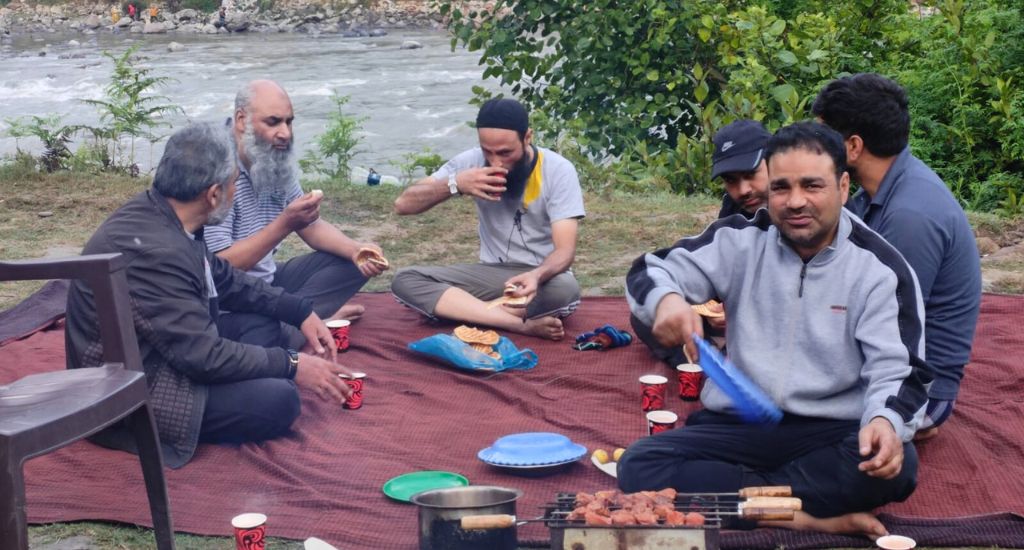
The continuous influx of tourists has created new opportunities for livelihood and employment in the area. Local youth have ventured into various roles, from running roadside eateries, serving tea, and selling ice cream to preparing chaat for visitors.
Just a year ago, Waseem Ahmad Khan, a science graduate from Keran, used to travel to Kupwara, the nearest town 55km away, in search of work during the summer months. However, thanks to the landmark decision of bringing Keran onto the tourism map, he is now earning a substantial income while working in his own village. Khan operates a camping service for tourists.
The economic impact extends to the women of the village as well. While the men, primarily youth, are busy hosting guests at homestays, the women ensure that the food served reflects the best of local taste and culture.
“My husband ensures I also get my due share of the money. Tourism has increased my pocket money,” said 29-year-old Jameela, wife of a homestay owner.
Even residents of the upper reaches of Keran have benefited equally. Young members of pastoral communities have started offering pony riding services for tourists.
Also Read: Deaf-mute Kashmiri woodcarver’s work leaves world speechless
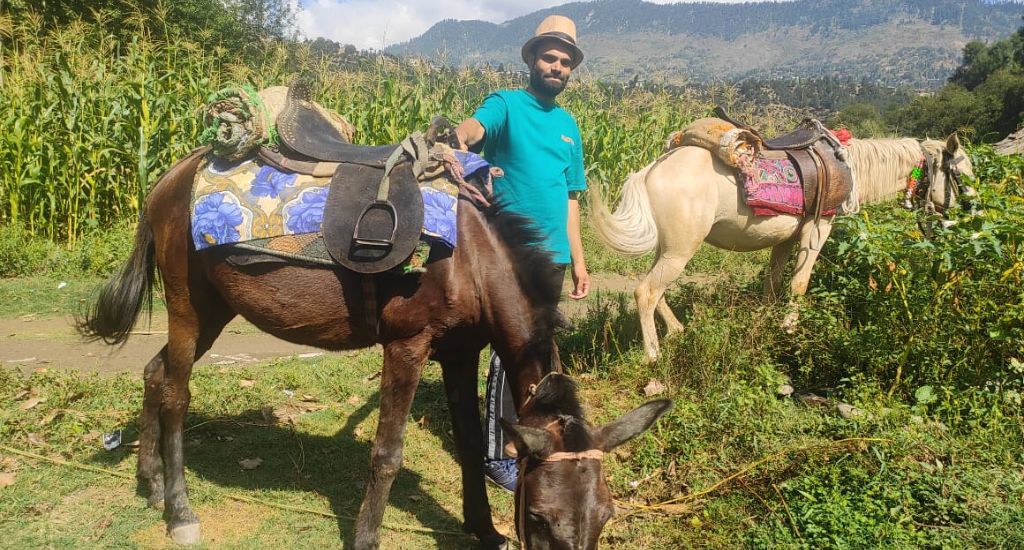
“I spent the summer months grazing ponies in the upper reaches. But seeing the tourism boom, this season I have decided to provide pony service to tourists. The decision has augured well. During the past few months, I could easily earn about Rs 30,000 a month,” said Sajad Ahmad, a pony owner from Keran Bala village.
As more nature enthusiasts explore border villages, the authorities are intensifying efforts to develop infrastructure in these areas.
Kupwara deputy commissioner Ayushi Sudan said the administration is working on enhancing tourism infrastructure in all border areas to facilitate tourists. Border regions like Keran possess immense tourism potential, and the goal is to ensure that tourists visiting these places have access to the best available infrastructure in the country.
The lead image at the top shows a spot on the Kishangana river that has been transformed into a popular viewing point in Keran. (Photo by Nasir Yousufi)
Nasir Yousufi is a journalist based in Srinagar.